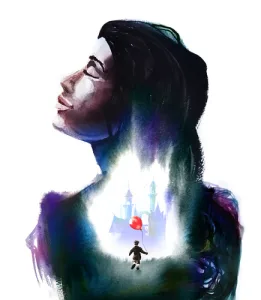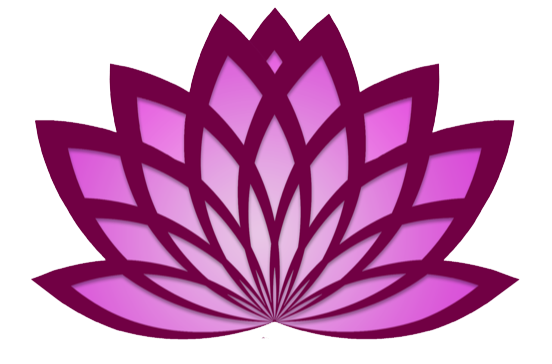
As a sex coach, I see a lot of folks who are struggling with sexual satisfaction. And something that occurs to me regularly is how many of these intimacy issues are tied directly to our experience as children.
Just as I see this in my clients’ lives, I can recognize it in my own, too. I notice it particularly in the way my childhood gave me a blueprint for intimacy (or lack thereof).
As a three year old, I lost my dad suddenly and tragically to a heart attack. He and I had been very close, and in the wake of his death, my mother had a nervous breakdown, leaving her unable to care for me for about a year. Extended family came to live with us and help take care of me, but they weren’t particularly nurturing.
So in the span of a few months, I lost my secure bond with my dad and, for practical purposes, my mother. And through those losses, I went from being a securely attached child to being anxiously avoidant. (For more on attachment styles, see this post.)
Trauma Changes Us
You don’t have to have endured abuse in your childhood to have childhood trauma.
And whether it’s capital T Trauma or lower case trauma, trauma inevitably changes us.
The sudden loss of my closest attachment bonds left me fearful of losing any other bonds. This fear gave me an anxious attachment pattern.
In addition, my fears about future abandonment made me exceptionally self-reliant, which gave me a pattern of avoidance.
These patterns have played out for my whole life. In the past, they did so on a subconscious level, leading me to desire closeness with my ex-husband, but be unable to open up to him.
Now I’m aware of my patterns and can make conscious choices to not play into the internal programming.
I can see when I’m being anxious about my bond with my partner. And usually, I can discern whether my anxiety is warranted or just part of the pattern.
I can also recognize when I’m pushing my partner away. Then I can pause and evaluate whether my avoidance is something warranted and healthy (such as setting a reasonable boundary) or whether it’s part of an unhealthy pattern.
What helped me to get to this point is having done a lot of work healing my inner child.
Six steps that you can take to start healing your inner child are:
1. Meditation
The Insight Timer app has some excellent meditations on inner child healing. My favorite is this one by Kenneth Soares. If this one doesn’t appeal to you, no worries. There are dozens of them to choose from on the app. Find something that speaks to you.
2. Visualization
I do two different kind of visualization techniques to soothe my inner child.
One is to imagine myself as a child in a stressful situation, and to imagine my adult self showing up in the scene to comfort and soothe my child self.
A second is to visualize what a healthy childhood would have looked like for me. What care and support did you need? Visualize having caregivers who met your needs.
3. Choose New Caregivers
While many of us empathic beings are quite good at doing things for other people, we sometimes suck at receiving. So your task is to learn how to ask for and receive care. I recommend starting out small.
Maybe ask for advice about something on social media. Or ask for something small that others might have around and be happy to share. (Kombucha scoby, or a sourdough starter?) The point is: Don’t be afraid to ask. Yes, you could just buy a starter or maybe make one yourself, but you probably know someone who has one and would be happy to share!
And while you’re receiving, give as well. When you go to pick up the thing offered to you, take a small bouquet of flowers cut from your yard as thanks!
This may seem like a mundane thing – asking for small, simple stuff and receiving it. But these connections built up over time are what forge real friendships with people you can rely on.
4. Remember How to Play
Close your eyes and head back to your childhood. Is there a game or activity you really enjoyed doing? Did you like to make art or sing or act? Remember a handful of things that brought you joy. Then, open your eyes, pick one of the things, and do it!
Some of us were told as children that art is a waste of time, or that their art wasn’t good. But if making art brought you joy as a child, give it another try now, and give your inner critic a pause from commenting on it.
5. Take Care of Your Child Self
Was there a treat you enjoyed as a child? One of my clients always loved Lucky Charms as a kid, but her caregivers rarely let her have it. (As a mom, I’m inclined to agree with her parents!)
But now, even though my client is a good cook and usually eats a healthy diet, she will pour herself a bowl of Lucky Charms when her inner child needs a pick-me-up.
Was there a toy you really wanted as a kid that your parents wouldn’t let you have?
Buy it for yourself! Or, if you don’t want the kid version of it anymore, buy an adult version of the same thing!
6. Do Inner Child Therapy
Inner child work isn’t easy, and we can’t heal decades of hurt in a short period of time. It takes time and patience and usually a skilled professional to help us through the sticky bits.
If you’re already doing therapy and aren’t having great luck healing the deep childhood wounds, consider either working with someone new who specializes in inner child work, or with someone who uses modalities that might be more effective than talk therapy. Some modalities I would suggest trying are Internal Family Systems (IFS) and EMDR (Eye Movement Desensitization & Reprocessing).
For a great introduction to IFS and how it’s used to do inner child work, I recommend this video series by Dr. Tori Olds.
For an explanation of EMDR, which is particularly effective for single-trauma healing, you can read more here.
Another modality that some of my friends and clients are finding successful is ketamine-assisted therapy, sometimes alongside the use of IFS.
Why Do the Work?
“I don’t feel like my childhood was that bad, Xanet. Surely lots of other people had much worse experiences than me. Why start digging into the past?”
Because when you do, the healing that’s possible is profound! When we address and heal those old, sticky wounds, the ease and pleasure we can experience multiplies.

Leave a Reply